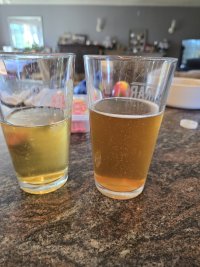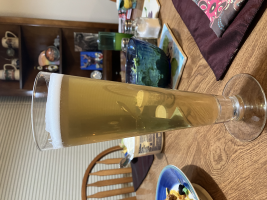Thank you for the words of encouragement. This is a new style for me so the learning curve is very high. I am about at 50% or so now, but going to leave it at 52 degrees or so for now. The beer I used for the gravity reading did not smell really bad so that is encouraging.Just keep letting it ride. Slow start usually means long fermentation. It will need to go at its pace now. The sulfur/sulphur is a bi-product of fermentation and hopefully will mostly get eaten back up by the yeast. One of the reasons why one does not want to underpitch a lager beer.
If you can be patient, do not raise the temp of the beer until at least 50% of the F.G. is reached.
As far as keeping the yeast in mason jars, it will only really be useful for up to 2 weeks. A month and a lot of it will be dead or dying. A "yeast brink" is the better way which stored the yeast in a 100% CO2 environment. But that can be something down the road for you to pick up.
The post regarding yeast in the fridge bums me out a bit, but doesn't surprise me. I was thinking of just messing around and trying to get a starter out of it, but it has been in the fridge for probably two months is not longer. I had used some bry97 that had been in the fridge that long, but it took a long time to get going and not really sure it was that good to start with. Dry yeast still isn't too bad price wise, so what the heck. My end goal is to do vials of different strains like one of the sticky's here explains and outlines, but I just don't have all the stuff yet and wife won't give up the freezer space. LOL. Again, thank you for the input. I appreciate it.




